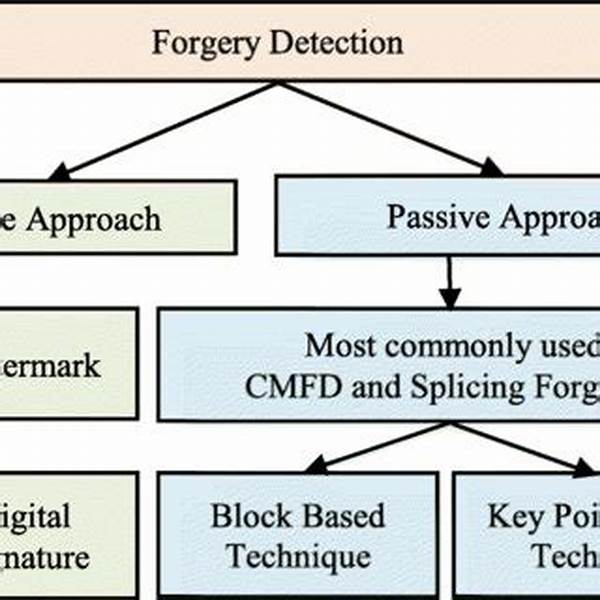In recent years, the art world has witnessed an increasing sophistication in forgery techniques, making it imperative to develop advanced tools for detecting fakes. Art forgery identification technology has emerged as a vital component in preserving the authenticity and historical integrity of artworks globally. By leveraging state-of-the-art technology, experts are now better equipped to discern between genuine masterpieces and cleverly crafted imitations, thus safeguarding both the cultural and monetary value of art collections.
Read Now : **aesthetically Pleasing Web Design**
Advances in Art Forgery Detection
Art forgery identification technology combines scientific and aesthetic insights to detect counterfeit art. Advanced imaging techniques like infrared reflectography and x-ray fluorescence enable experts to scrutinize a painting’s layers and materials. These technologies reveal underlying sketches, alterations, and materials inconsistent with the purported time period or artist style. Molecular analysis tools, such as mass spectrometry, further aid in analyzing paint composition, offering clues about the creation period. Meanwhile, artificial intelligence is becoming instrumental in assessing stylistic elements, learning artists’ unique strokes and patterns to identify discrepancies. Consequently, art forgery identification technology enhances the precision of authenticity assessments, providing art collectors and museums with confidence in their acquisitions.
Key Components of Art Forgery Identification Technology
1. Imaging Techniques: Crucial in unveiling inconsistencies, these techniques expose hidden layers and materials.
2. Chemical Analysis: Offers insight into the materials used, ensuring they align with known historical data.
3. Artificial Intelligence: Learns and analyzes stylistic nuances unique to each artist, detecting anomalies.
4. Provenance Research: Investigates the documented history of an artwork, cross-referencing with technology findings.
5. Digital Databases: Serve as repositories of known artworks, aiding in cross-verification of works under scrutiny.
The Role of Technology in Art Authentication
The rise of art forgery identification technology reflects a growing need for precision in the art authentication process. Traditional methods, relying heavily on subjective expert analysis, have evolved. Now, forensic science provides a more empirical foundation for authentication. Technologies like spectroscopic analysis and machine learning algorithms have transformed how experts approach art validation. The reliability of such advancements is crucial not only for potential buyers but also for institutions tasked with preserving cultural heritage. This intersection of art and technology underscores the importance of maintaining integrity in a field where authenticity is often challenged, emphasizing the indispensable role of art forgery identification technology.
Integrating Traditional and Modern Methods
Art forgery identification technology has not rendered traditional methods obsolete. Instead, it complements them, creating a comprehensive approach to authenticity verification. Expert connoisseurs continue to provide essential insights into artistic context and intent. By integrating traditional expertise with advanced scientific methods, the art world can uphold a more robust verification process. This fusion ensures that even the most convincing forgeries are detected, preserving the integrity of art history. Through this integration, art forgery identification technology serves as a bridge between historical expertise and modern innovation, reinforcing the art market’s trustworthiness.
Read Now : Enhancing User Experience With Alignment
Emerging Trends in Art Forgery Detection
Artificial Intelligence in Art Authentication
Art forgery identification technology increasingly relies on artificial intelligence to detect forgeries. Machine learning algorithms analyze vast databases of known works to identify unique stylistic traits of artists. By examining subtle deviations, AI uncovers patterns that human eyes might overlook, providing an additional layer of certainty.
Spectroscopic Analysis Revolution
The introduction of advanced spectroscopic analysis has revolutionized the field. By examining the interaction between light and matter in artworks, it reveals the chemical composition of pigments. This data helps confirm the authenticity related to a painting’s supposed time period or origin, bolstering art forgery identification technology’s capabilities.
Challenges and Solutions in Art Forgery Identification
The challenge of detecting art forgeries is complex, as forgers continuously refine their techniques. The development of art forgery identification technology aims to stay ahead of these advancements. Challenges include ensuring accessibility to all relevant data, optimizing technology for various mediums and styles, and maintaining cost-effectiveness. By investing in research, collaboration among stakeholders, and education, the art community can overcome these obstacles. Continued innovation and adaptation of technology, coupled with traditional expertise, fortify efforts to preserve the integrity of art collections, making art forgery identification technology more effective.
Conclusion
The Future of Art Authentication
The role of art forgery identification technology is growing ever-more critical in a world where art forgeries continue to evolve in sophistication. The future entails not only refining existing technologies but also developing new ones. Innovations in artificial intelligence, spectroscopy, and molecular analysis will further enhance detection capabilities. The integration of traditional expertise with cutting-edge technology will remain pivotal in authenticating art, ensuring the preservation of its cultural and historical significance.
Maintaining Art’s Integrity
Art forgery identification technology is essential in maintaining the integrity of art collections worldwide. By combining traditional methods with modern technological advancements, the art world can navigate the challenges posed by increasingly sophisticated forgeries. Continued collaboration among experts, researchers, and institutions is key to staying ahead of forgers, ensuring that true masterpieces are distinguished and preserved for future generations. The ongoing evolution of art forgery identification technology signifies a commitment to upholding the truth and value inherent in every authentic work of art.



